BUILDING
Benefits of DCS
Energy Saving
DCS is a very energy-efficient cooling solution as it takes full advantage of economy of scale, diversity in cooling demand for different buildings, and high standard of plant operation and maintenance. Although energy saving arising from DCS varies according to the DCS configuration, such as length of distribution pipeworks, heat rejection method and other plant efficiency improvement schemes, a typical saving of around 35% and 20% can be achieved when compared with traditional air-cooled air-conditioning systems and individual water-cooled air-conditioning systems using cooling towers respectively.
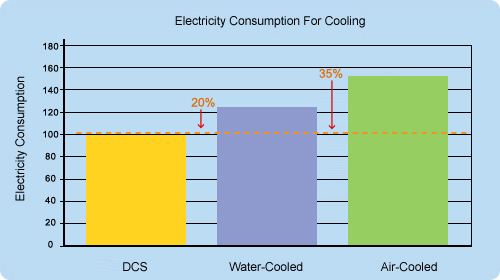
Reduce Green House Gas Emission
The reduction of energy consumption by using district cooling system, due to improved energy efficiency, helps to reduce fossil fuel consumption for power generation. Consequently, greenhouse gas emission such as carbon dioxide which causes the global warming can also be reduced.
Reduce Noise Pollution
With the removal of chiller plants and heat rejecting condensers from individual buildings, noise, vibration, thermal plume and waste heat pollution can be significantly reduced. Equipment that are located at central DCS plant can be kept under better acoustic, vibration and waste heat control.
Reduce Refrigerant Usage
The refrigerant used in air-conditioning equipment can be another source of environmental pollutant. In DCS, the quantity of refrigerant required to serve a district is less than the total amount of refrigerant required for individual centralised air-conditioning systems due to smaller overall plant size as a result of the load diversity and reduction of number of standby chillers. Besides, the refrigerant of DCS plants is handled by a specialised maintenance team, which can minimise the chance of accidental leakage.
Improve City Skyline
Removing the roof top chiller plant allows the architect to have greater flexibility in designing the building envelope. Since there is no need to accommodate the chiller, building roof can be designed with more artistic elements such as recreational facilities and sky gardens. This will eventually help to improve the city outlook.
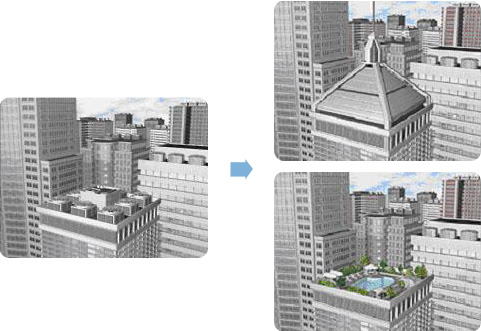
Improve Building Space Utilisation
Buildings using the DCS service can save remarkable plant room area since chiller plant is no longer required. In general, it is estimated that an average of 75% of plant room space can be saved when compared with conventional air-conditioning plant. This has not taken into account the space saving of power company's transformer room as a result of removal of the chiller plant.
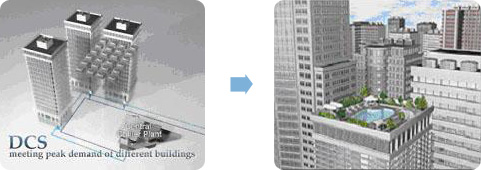
Improve Reliability and Flexibility
DCS enables the building owner/management company to simplify their building management team since the building has no chiller plant equipment to operate and maintain. There is no need to allow provision for chiller replacement, fewer constraints in expanding cooling capacity and less spare parts need to be stocked. Building owners can then focus more on their core business. Compared with conventional centralised air-conditioning system, district cooling systems are built with standby cooling capacity to ensure that cooling is always available at the central plant. Distribution systems are generally designed with multiple loops or other back-up to provide additional reliability in distribution. Overall, the reliability provided by a properly designed and constructed district cooling system is greater than most buildings can achieve individually.
Besides, computerised energy management system in the chiller plant will monitor and manage chilled water supply to users ensuring stable supply of cooling at all times.
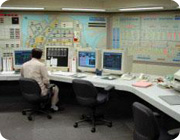
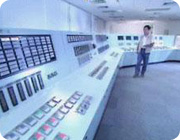
Costs Saving
A district cooling system allows the building owner to eliminate their on-site chiller operation and maintenance. By doing this, the building owner no longer needs to operate and maintain chillers, and replace chillers at the end of their life cycles. Therefore, building owners using DCS can minimize the capital investment and the subsequent maintenance costs for their air-conditioning plants.